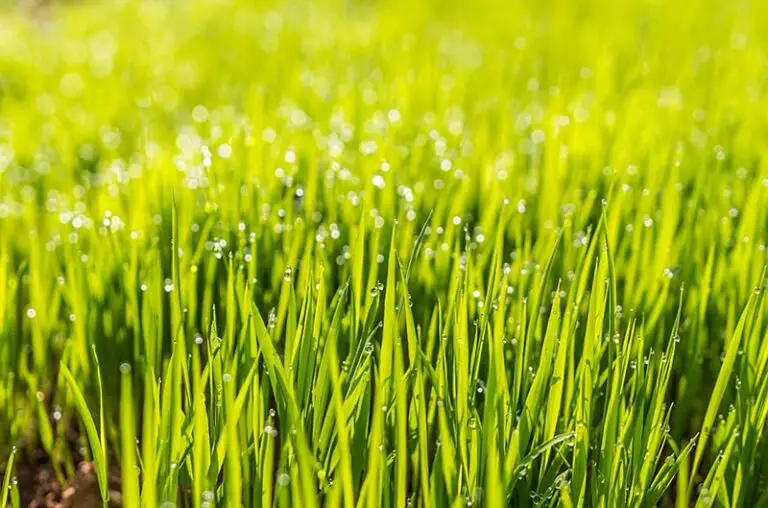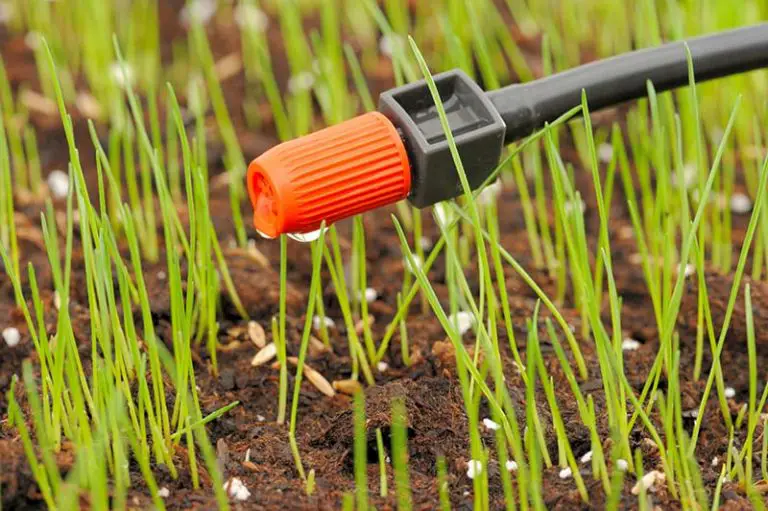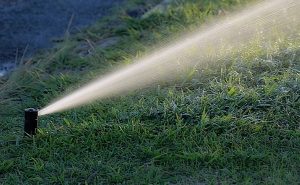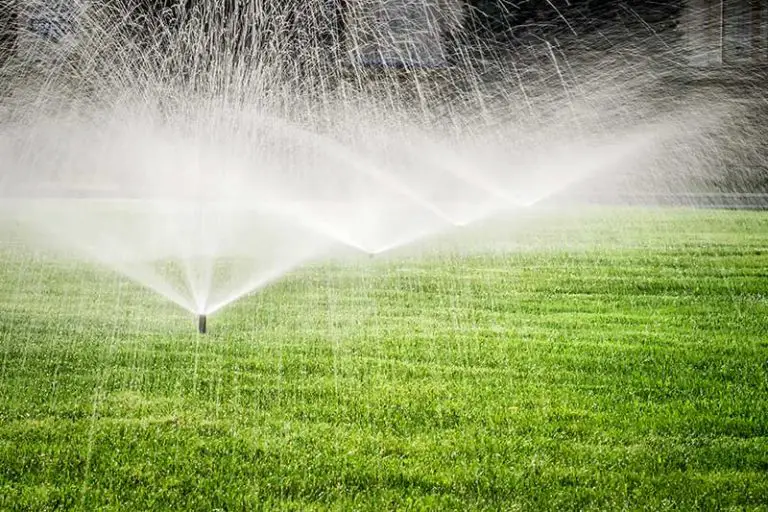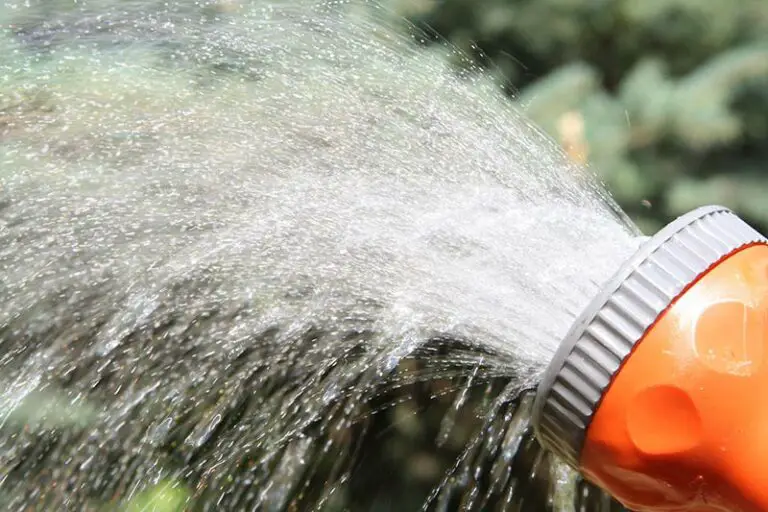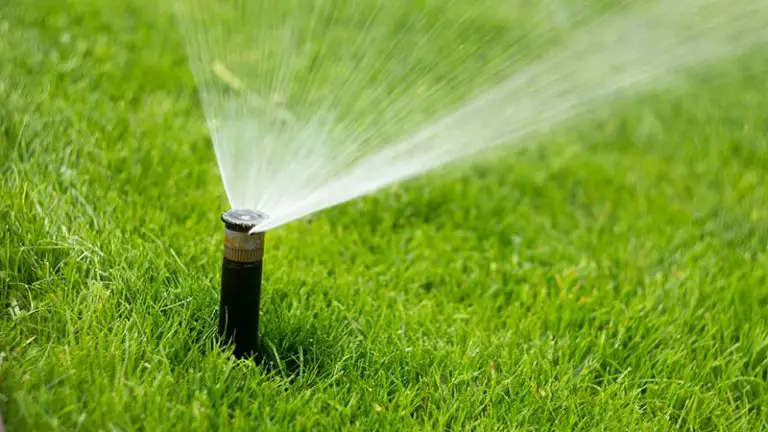Types of Garden Hoses
A gardening hose serves as an iconic and useful piece of equipment, and most gardens have them. They’re fairly easy to find in stores and online, due to their essential usage for garden maintenance. However, as with many different products, there is a selection to choose from, each with its own advantages and disadvantages. As a result, there are a few different types of garden hoses to choose from, and knowing the differences can help you make a better decision when it comes to purchasing one.
Why Should I Buy a Garden Hose?
Garden hoses are an ideal way to quickly water a garden without the need for several trips to the faucet to fill up a watering can. They’re used for many different reasons, and have many different benefits. Garden hoses simply attach to an outside faucet and carry the water from it, to wherever the hose nozzle is. They’re adaptable, meaning that you can add attachments to the end of this nozzle including different types of lawn sprinklers, and even different nozzles which can produce a range of different sprays to suit your garden’s needs, such as light sprays to help water delicate flowers or fresh grass seed.
Standard Garden Hoses
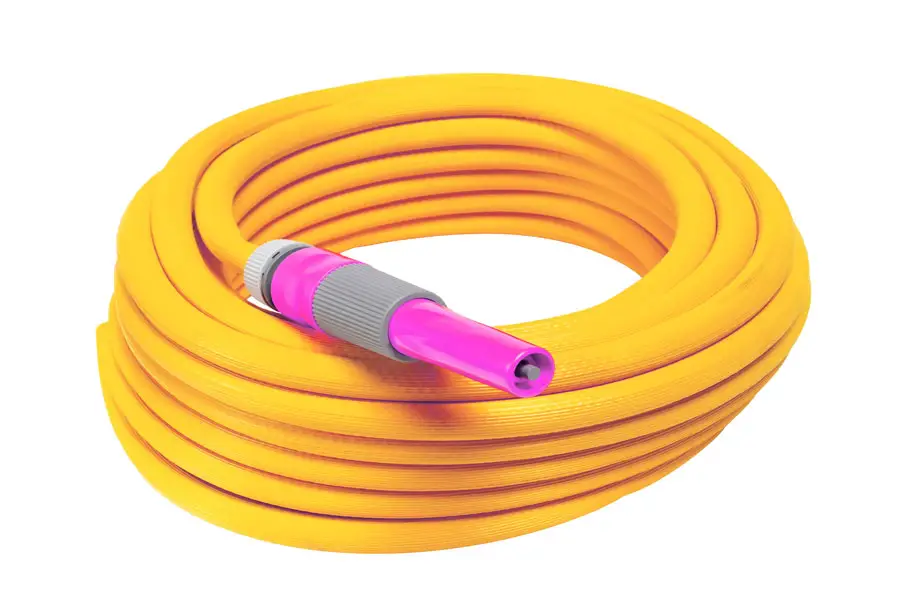
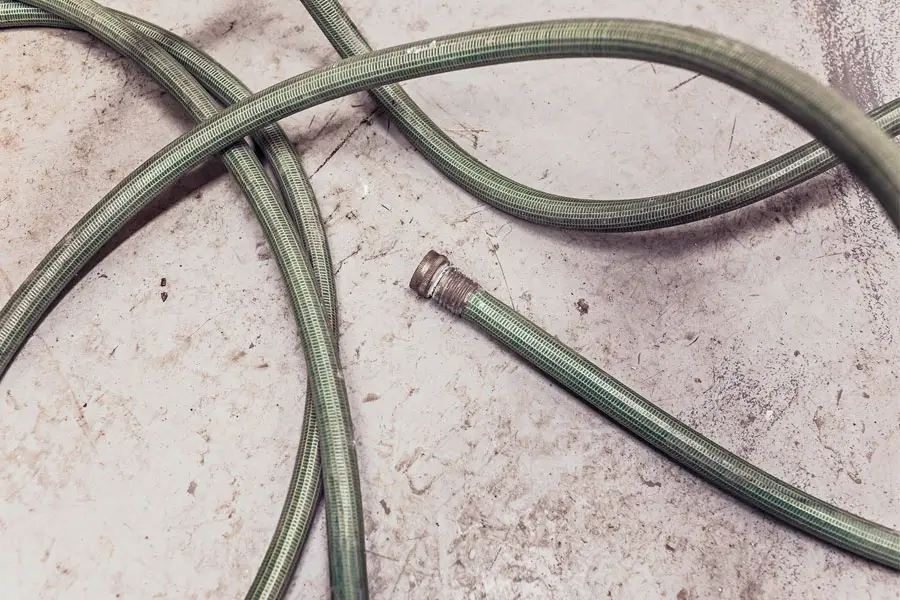
Standard garden hoses, as the name suggests, are the average garden hose. They’re the most commonly found garden hoses due to their availability and inexpensiveness. These types of hoses are often made up of rubber and are easy to use and bend regardless of what weather conditions you’re using it in. Standard garden hoses can come in a variety of different lengths and sizes, and are usually very versatile. If you have a particular sized hose bib or faucet, you’ll be likely to find a standard garden hose that fits it due to the abundance of different choices and varieties. Standard garden hoses often come in lengths of 25-100ft, but it is possible to find shorter or longer ones to fit your needs.
Standard garden hoses are often used by hobbyists and households who don’t frequently need to use one. They’re used mostly for watering plants and grass which may require several trips back and forth with a watering can otherwise. Due to the rubber that they’re often made from, standard garden hoses may degrade or become damaged quicker than some more expensive hose types that are also available on the market. If you frequently use a hose or have one exposed to the elements, perhaps a standard hose is not the best choice for you.
Expandable Hoses
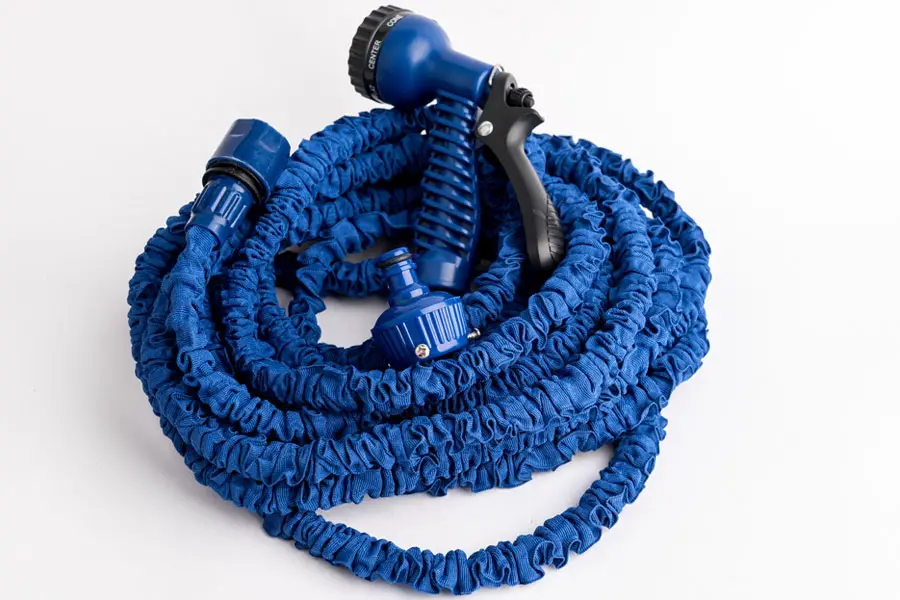
Expandable hoses have gained popularity over the past several years due to their gimmick. Expandable hoses are compact and considerably flatter than some other types of hoses, but once connected to a water supply, they expand to become the length and size of a standard garden hose. Expandable hoses can expand up to three times larger than the size they start off as. Expandable hoses are sometimes known as accordion hoses, due to their accordion-like structure. This shape and structure works well in preventing twists, kinks and the damage that is sometimes caused by these movements. This makes expandable hoses durable, and less likely to suffer a break.
In addition to this, expandable hoses are also easily stored in smaller areas than other hoses can be stored in due to their collapsible nature. This means that you can also save money on a hose reel, as expandable hoses don’t necessarily need them to stay neat and tidy. Some people also call this type of hose “pocket hoses” as they can collapse into a size small enough to fit inside a pocket.
Flat Hoses
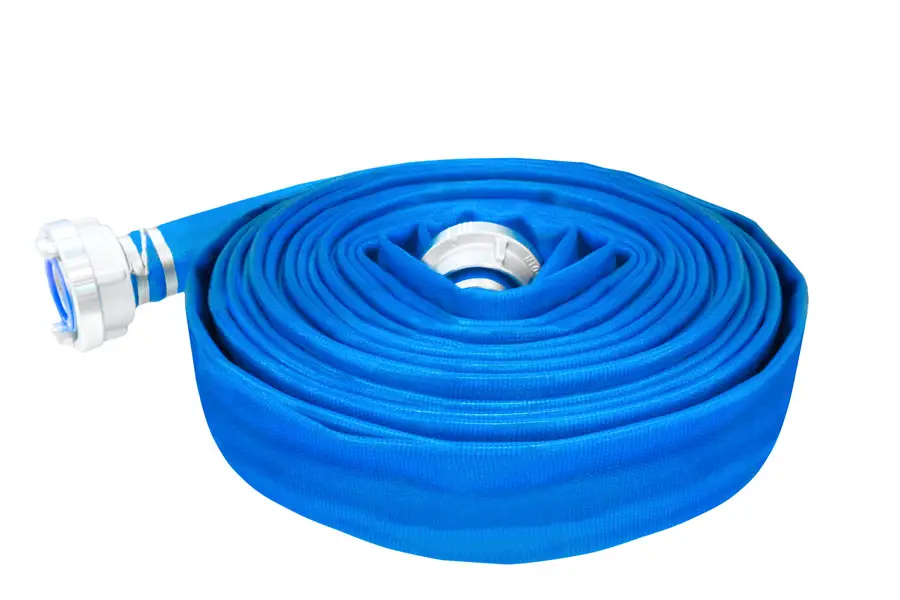
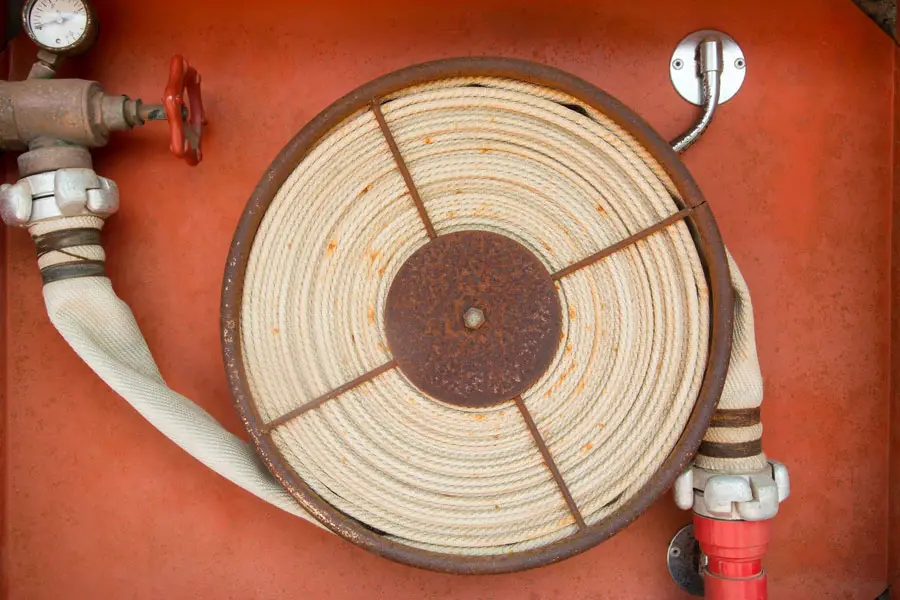
Flat hoses take some of the advantages of expandable hoses but are usually cheaper to buy, and offer more length options. Flat hoses are compact and are flattened until given access to a water supply. As a result, they’re ideal for people who struggle with storage or those who use their hoses sparingly and plan on keeping it in storage for most of the time. Flat hoses may prove to be slightly harder to store without access to a hose reel, due to their shape, as they can easily unwind.
Flat hoses are best used by hobbyists and households who don’t need to use their hose frequently. Flat hoses may be more prone to kinks or punctures as they are easy to trip on or accidentally step on due to their configuration. This type of hose is what is commonly used by firefighters, albeit on a much larger scale.
Soaker Hoses
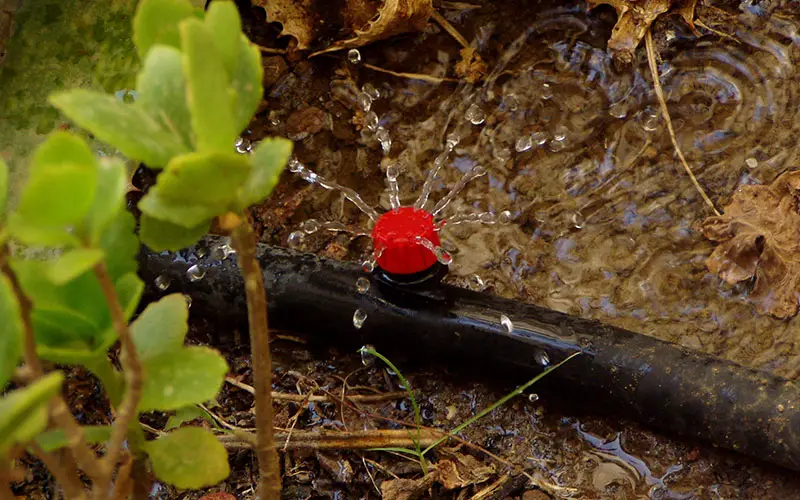
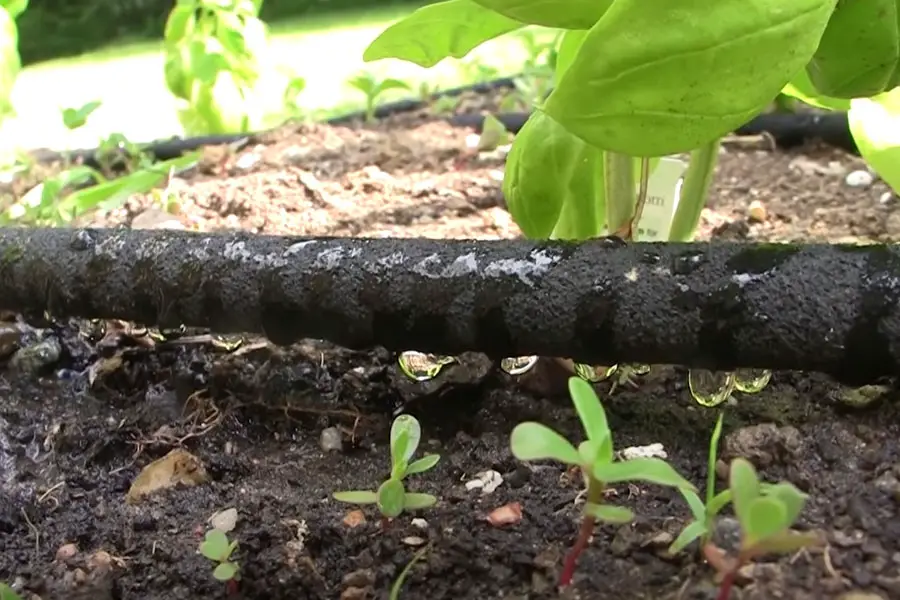
Soaker hoses aren’t used in the same way that most traditional hoses are used for. Soaker hoses are designed for use in flower beds or areas that need a gentle, minimal and continual spread of water to them. A soaker hose is designed to not be compatible with a nozzle, and the end is often capped off. To compensate, the hose is dotted with uniformed holes which is where the water comes out from once attached to a water supply.
Soaker hoses are usually used long-term and are installed in a specific way to make the most out of their qualities. In summer months, especially, soaker hoses are lined through flower beds or vegetable patches, and covered in mulch or a thin layer of soil for protection as they water the plants around them.
Soaker hoses are easy to install once you know what you’re doing, and provide a valuable service to your flowers and vegetables. Their slow release of water also means that all water is utilized by the plants surrounding it, meaning that water waste is also limited when using a soaker hose.
Soak and Spray Hoses
Soak and spray hoses are useful for spraying small areas with an even and gentle stream. Similarly to soaker hoses, soak and spray hoses are ideal for flower beds or vegetable patches, or any small area that needs watering.
Soak and spray hoses, however, offer the opportunity to control the water’s direction when watering plants, unlike soaker hoses.
Soak and spray hoses are considered combination hoses, so you can enjoy both the benefits of a standard hose and a soaker hose by using one contraption.
Metal Hoses
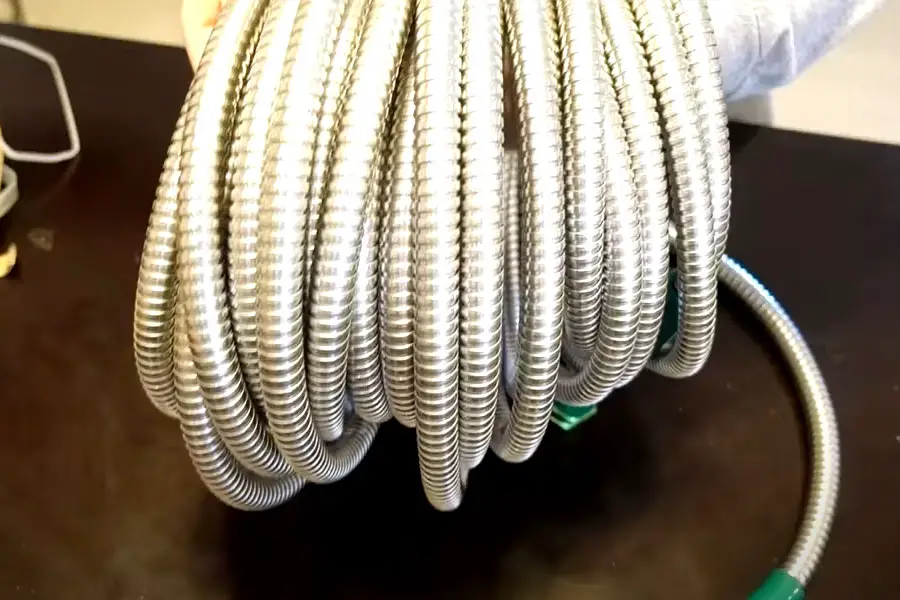
Metal hoses are the same in shape, length and function as standard hoses, albeit made with another material. Rather than rubber, metal hoses are often made with industrial stainless steel. These hoses are puncture and kink resistant due to their choice in material, and as a result, are much more durable and robust. They can be left outside for much longer without succumbing to any damage and can be walked on, run over or poked without the same level of concern that a rubber hose would cause. Metal hoses can range from 25-100ft in length and can be attached to many different types of faucets or bibs.
Metal hoses can prove difficult to store due to their composition, as metal is significantly harder to roll up or bundle up than rubber is.
A metal hose would be ideal for anyone who plans on using their hose frequently and leaving it outside for long periods of time.
Coiled Hoses
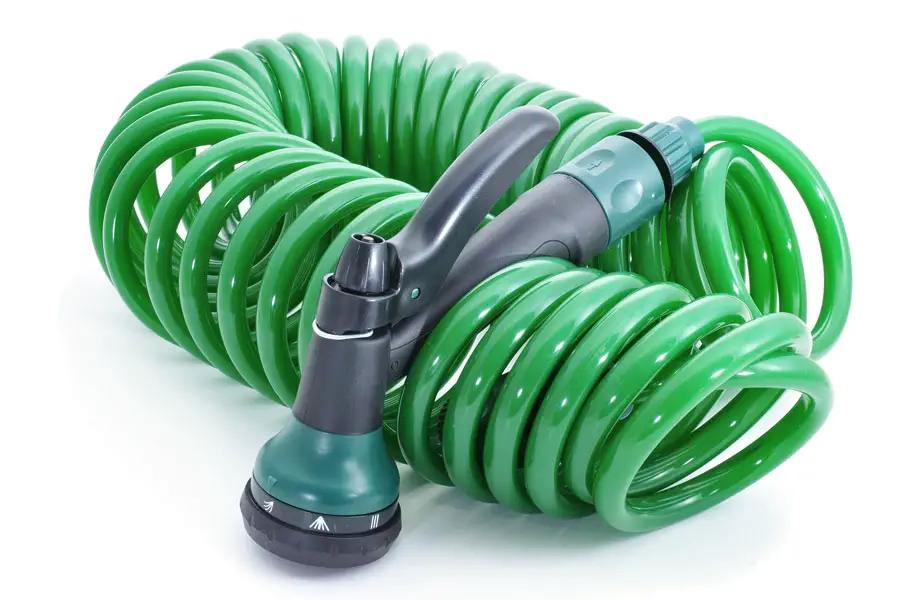
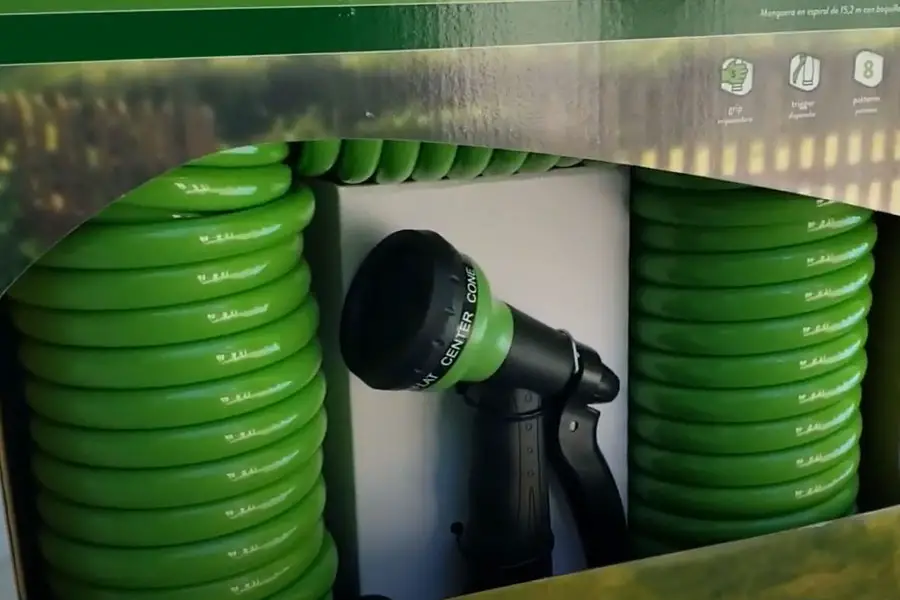
Coiled hoses are slightly harder to come across now, especially with the availability of similar hoses such as expandable ones and flat hoses. The most noticeable feature of coiled hoses is that they are shaped in a series of coils, which stretch out as the hose is attached to a water supply and walked around the yard. Coiled hoses are often shorter in length than a lot of other hoses on the market, and often come in length sizes of 15-25ft, which makes them ideal for people who only need to water small areas. In addition to this, their coiled shape makes for extremely easy storage, and a hose reel isn’t necessary. As a result, they are perfect for small houses and yards, or even as a backup in case your preferred hose breaks or is damaged.
Commercial-Grade Hoses
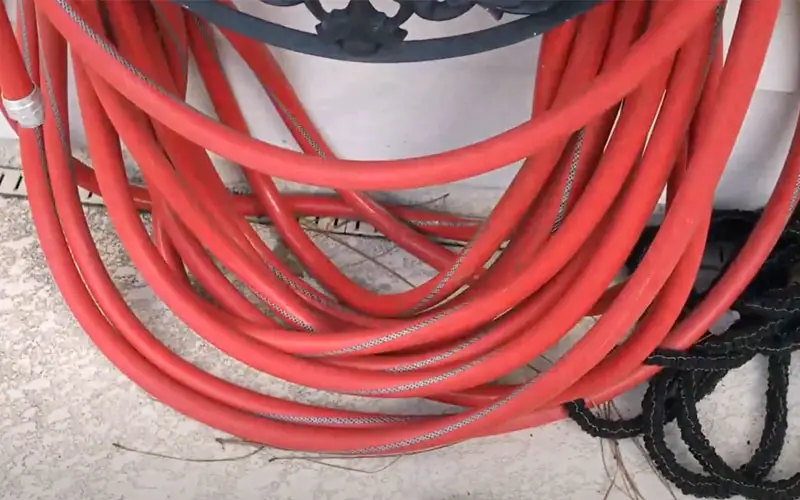
Commercial-grade hoses are one type of garden hose which are made to withstand nearly everything thrown at them. They’re robust, durable, and very hard to penetrate the surface of. They are often made of materials such as thick rubber reinforced with stainless steel rings to ensure that they remain in working condition for as long as possible. These hoses are also often UV protected, and can be left outside for long periods of time without seeing any weakness in the rubber due to UV or heat exposure. They are also designed to be much more resistant to high water pressure, and their diameters are occasionally larger to allow for more water passage.
What to Consider When Buying a Garden Hose
A garden hose is an investment that could last a very long time, providing you buy the correct one for you.With so many different types of garden hoses available on the market, it’s beneficial to think about what features you need before you begin looking.
Length
The length that you’ll need your hose to be should be one of the main deciding factors when it comes to choosing a new one. With hoses, longer isn’t always better as a hose that is too big could be too hard to carry and store. Most gardeners use hoses from 50-75 inches long and find that they work best for their needs.
Material
The material of a garden hose can also change the way it operates, how it’s stored, and for how long it can stay in use. Choosing a more durable, reliable material may add some cost to your purchase, but it can also withstand more activity and time outside. The most common types of materials used to create garden hoses are vinyl, rubber and reinforced materials using stainless steel.
Hose Diameter
How much water passes through and the heaviness of the water release is dependent on the hose diameter. Firstly, it’s more ideal buying a hose that will correctly attach to your faucet or hose bib. If it doesn’t you can easily buy a new faucet or hose bib and replace your old one. The most common sizes are 5/ 8”, 3/ 4” and 1/ 2”.
Strength
The strength of a hose can depend on the materials used to create it. The strength can refer to how resistant it is to certain damage such as UV damage, punctures or kinks, but it can also refer to how well it handles water pressure. High water pressure can damage a hose, especially one that has a sprinkler or other attachment. If you plan on using your hose for this purpose, make sure it’s built to withstand at least 300 PSI.
Flexibility
The flexibility of a hose can help you navigate your garden easier and may also help with storage. The downside is that it can also lead to more kinks or knots.
Couplings
Hoses have two end pieces. Whilst one is attached to a faucet, another can have a hose nozzle or sprinkler attached to it. If you already have a nozzle or sprinkler in mind that you want, make sure that the hose you’re purchasing is compatible with the attachments you wish to use. In addition to this, couplings can sometimes be cheaply made and of poor quality. The better types of couplings are the ones made from brass or a similar compound. However, a lot of cheaper hoses tend to opt for plastic ones. Be aware that these couplings could also cause you some issues if they look like they are prone to breaking.
Final Thoughts
Buying a garden hose might be a thoughtless decision considering their abundance in the market, but once you begin to consider the different types and all your different needs, then it becomes a much more thought-provoking decision. A garden hose that has been bought specifically to suit your needs is one that is likely to last a much longer time than one that is bought on a whim.

